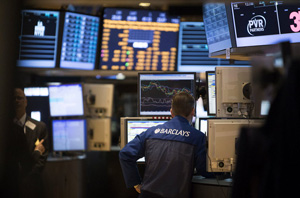
As more exchange traded funds (ETFs) are introduced in Canada, growing competition will lead to downward pressure on costs but could also result in the proliferation of riskier products, a Toronto conference on ETFs was told Thursday.
“ETFs will move toward more sophisticated exposures,” Ian Williams, managing director of sales & trading at Toronto-based brokerage firm ITC Canada Corp. told the conference, which was sponsored by BMO Exchange Traded Funds. “We’ll see more use of derivatives in ETFs, as they provide efficient access to exposures you wouldn’t otherwise get.”
Williams, who deals primarily with institutional clients, says the largest area of ETF usage for his clients is emerging markets. Canadian institutional portfolio managers tend to be comfortable in actively picking their own stocks and bonds in domestic markets, but ETFs are useful in giving them diversified exposure in the trickier emerging markets.
“It’s more difficult to understand the markets in India and China, and many institutional clients are using ETFs for broad exposure in that space,” says Williams. “What happens on the institutional side usually cascades down into the retail side.”
On the retail side, he says the majority of ETF assets are still in products that represent exposure to broad stock market indices such as the S&P/TSX composite index. About 93% of the Canadian marketplace is in “plain vanilla” products, he says.
Institutions are also using ETFs for “tactical overlays,” he says. For example, they may increase a portfolio’s exposure to a specific asset class by owning a slice of ETFs investing in commodities, gold or real estate. Using ETFs for fixed income exposure is also on the rise for both retail and institutional investors.
“ETFs represent the democratization of fixed income markets by providing easy delivery to the retail marketplace,” Williams says. “Equity markets are the most transparent in the world, but fixed income has traditionally been fragmented, with trades conducted through a number of different banks and brokerage firms. The efficiency of these markets will improve with time.”
Alfred Lee, vice president, portfolio manager and investment strategist at BMO Exchange Traded Funds in Toronto, said ETFs are increasingly being used for innovative investment strategies such as laddered preferred share portfolios, income enhancement through covered calls, and the construction of “low-volatility” portfolios.
Some ETFs combine a mix of active and passive strategies. For example, they may use a passive strategy for exposure that duplicates a recognized stock market index, but layer on top of this an active strategy of covered call writing to enhance the income delivered by the underlying ETF portfolio.
“The covered call-writing process is more dynamic than a pure index strategy which is more rigid,” Lee said. “The manager can vary the strategy to potentially enhance the returns delivered by the index.”
Jamie Farmer, managing director, index investment strategy and data services with S&P Dow Jones Indices, said the underlying securities indices or baskets of securities on which ETFs are based can be adapted for different purposes. For example, they can provide equal weighting for a selected group of stocks, rather than a simple market capitalization-based weighting for every stock in an index.
“At the leading edge are more factor-based indices where you can massage out some of the volatility of standard market indices,” he says.
ETFs are also becoming increasingly specialized and the desperate search for yield on the part of investors is leading to innovations.
“There are some 830,000 different indices in the world,” he says. “You could have an ETF based on the Icelandic mid-cap health care stocks. ETFs can be segmented by style, company size, geography, sector or currency. There is always a catalyst in the marketplace for ETF development, such as the search for yield or a specific asset class.”
Farmer cautioned that because not all indices that underlie ETFs are the same, it is increasingly important to examine the underlying methodology behind the creation of the index, such as the liquidity and weighting of the underlying securities and the rebalancing strategy.
“You must look under the covers,” he said. “Two indices that track the same thing can be dramatically different.”
For example, an ETF offering gold exposure could track the returns of physical bullion, futures markets or gold mining companies, and all of these categories would perform differently.